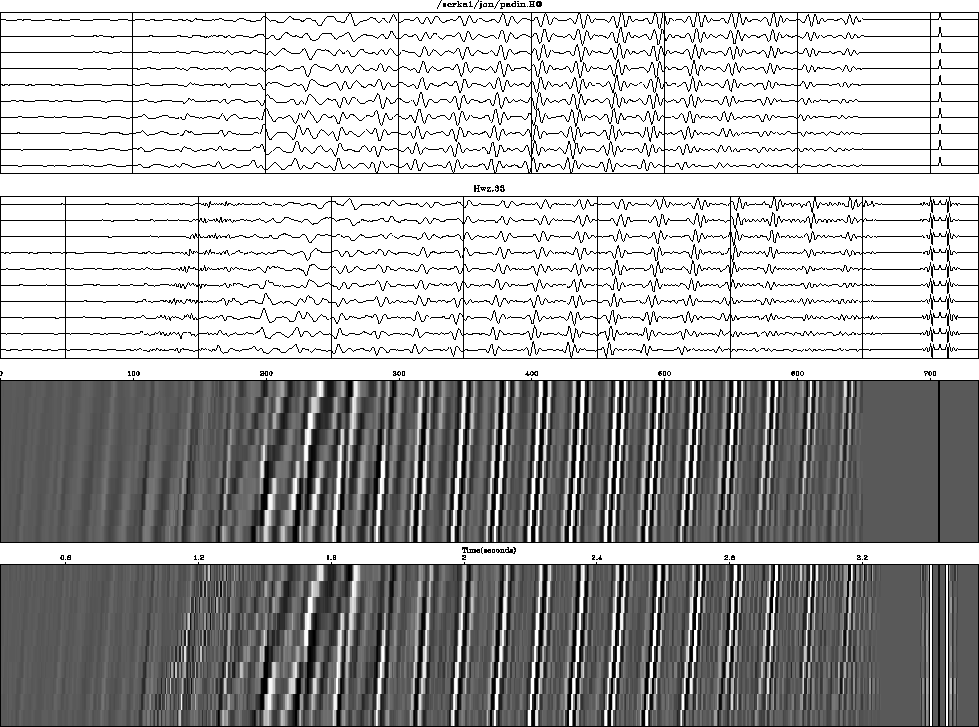have the form
![]() ,where the at coefficients are adjusted to minimize the power
in the filter output.
IE filters have the strange characteristic that if the input spectrum
is
,where the at coefficients are adjusted to minimize the power
in the filter output.
IE filters have the strange characteristic that if the input spectrum
is ![]() ,then the output spectrum will tend to
,then the output spectrum will tend to
![]() .Thus these filters tend to turn poles into zeros and vice versa.
To see why IE filters invert the spectrum of the input,
we only need recall the basic premise of least-squares methods,
that the residual (the output) is orthogonal to the fitting function
(the input at all lags except the zero lag).
Thus, the crosscorrelation of the input and the output is an impulse.
This can only happen if their spectra are inverses,
which is a disaster for the overall appearance of a seismogram.
Such drastic spectral change can be controlled in a variety of ways,
as is true with PE filters, but with IE filters
there seems to be little experience to build on besides my own.
Figure 13 illustrates an interpolation-error result
where gapping has been used to limit the color changes.
.Thus these filters tend to turn poles into zeros and vice versa.
To see why IE filters invert the spectrum of the input,
we only need recall the basic premise of least-squares methods,
that the residual (the output) is orthogonal to the fitting function
(the input at all lags except the zero lag).
Thus, the crosscorrelation of the input and the output is an impulse.
This can only happen if their spectra are inverses,
which is a disaster for the overall appearance of a seismogram.
Such drastic spectral change can be controlled in a variety of ways,
as is true with PE filters, but with IE filters
there seems to be little experience to build on besides my own.
Figure 13 illustrates an interpolation-error result
where gapping has been used to limit the color changes.
 |
I also chose the gap to condense the wavelet. You judge whether the result is successful. Notice also a high-frequency arrival after the diagonal lines: this shows that the IE filters are boosting very high frequencies despite the gapping.